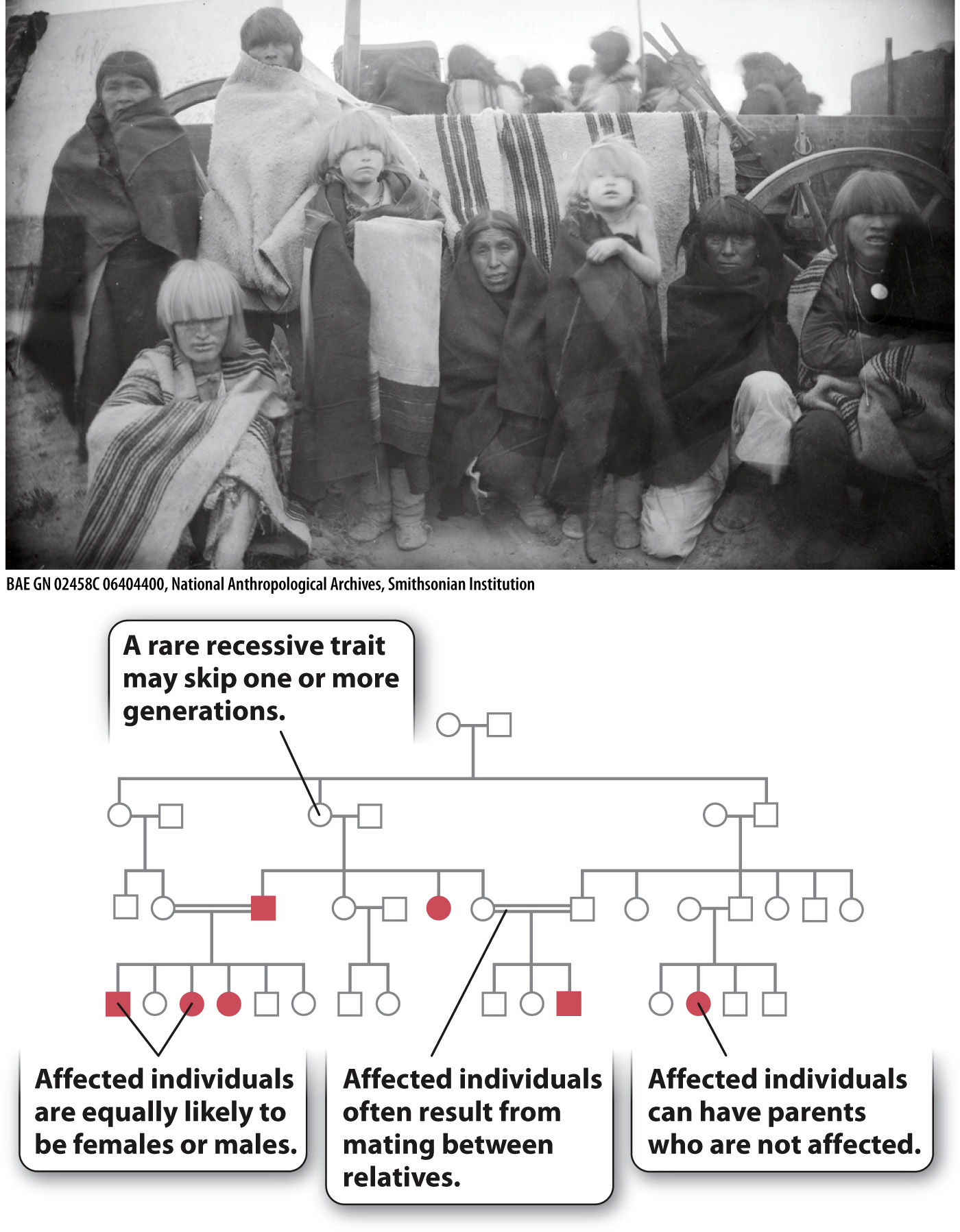Recessive traits skip generations.
Recessive inheritance shows a pedigree pattern very different from that of dominant inheritance. The pedigree shown in Fig. 16.19 pertains to albinism, in which the amount of melanin pigment in the skin, hair, and eyes is reduced. In most populations, the frequency of albinism is about 1 in 36,000, but it has a much higher frequency—

As noted in Chapter 15, another type of mutation affecting expression of this same gene is associated with blue eyes. As shown in Fig. 16.19, double lines represent matings between relatives, and in both cases shown here the mating is between first cousins.
These are the principal pedigree characteristics of recessive traits:
The trait may skip one or more generations.
Affected individuals are equally likely to be females or males.
Affected individuals may have unaffected parents, as in the offspring of the second mating in the second generation in Fig. 16.19. For a recessive trait that is sufficiently rare, virtually all affected individuals have unaffected parents.
Affected individuals often result from mating between relatives, typically first cousins.
Recessive inheritance has these characteristics because recessive alleles can be transmitted from generation to generation without manifesting the recessive phenotype. In order for an affected individual to occur, the recessive allele must be inherited from both parents. Mating between relatives often allows rare recessive alleles to become homozygous because an ancestor that is shared between the relatives may carry the gene (Aa). The recessive allele in the common ancestor can be transmitted to both parents, making them each a carrier of the allele as well. If both parents are unaffected carriers of the allele, they both have the genotype Aa, and therefore ¼ of their offspring are expected to be homozygous aa and affected.